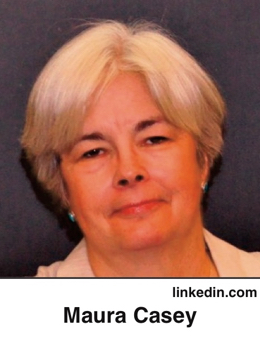Rascals case in brief
In the beginning, in 1989, more than 90 children at the Little Rascals Day Care Center in Edenton, North Carolina, accused a total of 20 adults with 429 instances of sexual abuse over a three-year period. It may have all begun with one parent’s complaint about punishment given her child.
Among the alleged perpetrators: the sheriff and mayor. But prosecutors would charge only Robin Byrum, Darlene Harris, Elizabeth “Betsy” Kelly, Robert “Bob” Kelly, Willard Scott Privott, Shelley Stone and Dawn Wilson – the Edenton 7.
Along with sodomy and beatings, allegations included a baby killed with a handgun, a child being hung upside down from a tree and being set on fire and countless other fantastic incidents involving spaceships, hot air balloons, pirate ships and trained sharks.
By the time prosecutors dropped the last charges in 1997, Little Rascals had become North Carolina’s longest and most costly criminal trial. Prosecutors kept defendants jailed in hopes at least one would turn against their supposed co-conspirators. Remarkably, none did. Another shameful record: Five defendants had to wait longer to face their accusers in court than anyone else in North Carolina history.
Between 1991 and 1997, Ofra Bikel produced three extraordinary episodes on the Little Rascals case for the PBS series “Frontline.” Although “Innocence Lost” did not deter prosecutors, it exposed their tactics and fostered nationwide skepticism and dismay.
With each passing year, the absurdity of the Little Rascals charges has become more obvious. But no admission of error has ever come from prosecutors, police, interviewers or parents. This site is devoted to the issues raised by this case.
On Facebook
Click for earlier Facebook posts archived on this site
Click to go to
Today’s random selection from the Little Rascals Day Care archives….
Click for earlier Facebook posts archived on this site
Click to go to
Today’s random selection from the Little Rascals Day Care archives….
One less platform for ritual-abuse fantasizers
 April 27, 2012
April 27, 2012
Friday news roundup:
■ Darkness to Light, the Charleston-based nonprofit with the goal “End Child Abuse,” has responded to my request to disassociate itself from one of the last promoters of the ritual-abuse day-care hoax. This is from Erika Rowell, program coordinator for D2L: “After taking a long look at the Survivorship website we have decided to remove it from our resource list.”
■ The North Carolina Supreme Court’s latest release on petitions allowed and denied included no ruling on Junior Chandler’s appeal. Next possible release date: June 14.
■ The New York Times reports a jarring increase in the number of retractions published in scientific journals. The Times focuses on heavyweights such as Science and the New England Journal of Medicine, but I have to wonder whether – OK, hope that – this phenomenon might one day extend to the likes of the Journal of Child Sexual Abuse, the Journal of Psychohistory and Treating Abuse Today, all of which failed to apply professional skepticism to the abuse fantasies of their contributors.
McMartin’s prosecutor’s pitch was certainly graphic
Feb. 8, 2013
“Your honor, ladies and gentlemen, this is a case about trust and betrayal of trust… trust placed in the hands of Ray Buckey and Peggy Buckey. Parents who will testify will tell you… they didn’t ask about activities that were going on at the preschool. They didn’t piece together the clues they were getting from their children. These parents will tell you they now understand the importance of listening. The case contains 100 felony counts of Section 288-A and B, and one count of conspiracy….
“Betrayal! These innocent children placed their trust in these two teachers and the teachers betrayed them…. One mother observed her two daughters performing oral copulation on each other. Another mother saw a sore rectum in her child. She will tell you she did not want to go to school, did not want to sit on her father’s lap and that she ran through the house singing, ‘What you see is what you are/ You’re a naked movie star.’
“One mother will tell you that she saw her daughter masturbating with a wooden pole. One mother will tell you that her children had nightmares. One mother will tell you that her child had a rectal fissure. Another mother will tell you she saw bloody stools when her child went to the bathroom. Then, the people will ask you to bring back verdicts on all 100 counts….”
– From Deputy District Attorney Lael Rubin’s opening statement in the McMartin Preschool ritual-abuse case
After the jury acquitted the Buckeys on 52 counts and deadlocked on 13 counts, Rubin complained that “They were lucky. I just hope to God that years from now we don’t hear about Ray Buckey molesting children…. I don’t think I would do anything different.”
Rubin seems to have been almost as graceless a loser as Nancy Lamb, doesn’t she? Almost.
Why we want to forget the day-care abuse craziness
 July 6, 2012
July 6, 2012
“When you once believed something that now strikes you as absurd, even unhinged, it can be almost impossible to summon that feeling of credulity again.
“Maybe that is why it is easier for most of us to forget, rather than to try and explain, the Satanic-abuse scare that gripped this country in the early ‘80s – the myth that Devil-worshipers had set up shop in our day-care centers, where their clever adepts were raping and sodomizing children, practicing ritual sacrifice, shedding their clothes, drinking blood and eating feces, all unnoticed by parents, neighbors and the authorities.”
– Margaret Talbot, writing in The New York Times Magazine, Jan. 7, 2001
Injustice without amends: ‘We should be ashamed’
 Aug. 4, 2015
Aug. 4, 2015
“Some have drawn parallels between the Salem witch trials of 1692 and the false accusations of sexual abuse that sweptc America in the 1980s. The difference is this:
“Those falsely accused in Salem got public apologies from their accusers and reparations. No such luck for the dozens of day-care workers and others who were falsely accused and imprisoned in modern-day America.
“We should be ashamed.”
– From “How the daycare child abuse hysteria of the 1980s became a witch hunt,” a review of “We Believe the Children,” by Maura Casey in the Washington Post (July 31)
I’ll have more soon on Richard Beck’s important new addition to the “satanic ritual abuse” bookshelf.











0 CommentsComment on Facebook